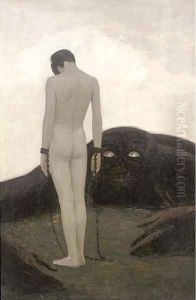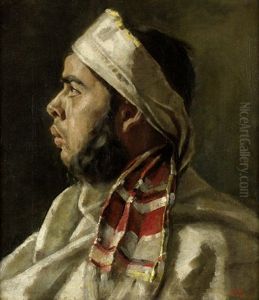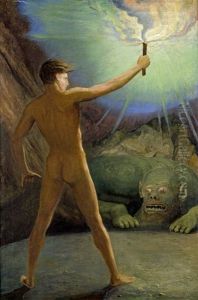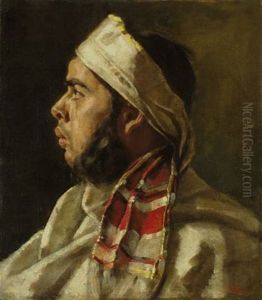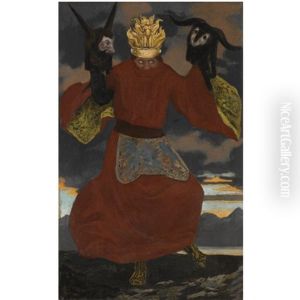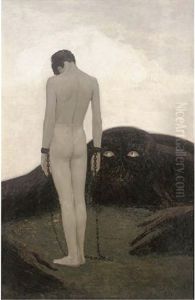Sascha Schneider Paintings
Sascha Schneider, born Rudolph Karl Alexander Schneider on September 21, 1870, in Saint Petersburg, Russia, was a German artist known for his unique contributions to Symbolism and Art Nouveau. Despite being born into the instability of the Russian Empire, Schneider's family moved to Germany during his childhood, allowing him to pursue an artistic career in a more nurturing environment. He studied at the Dresden Academy of Fine Arts and later at the Academy of Fine Arts Munich, where he honed his skills and developed his distinctive style. Schneider's work is characterized by its exploration of the human condition, often incorporating themes of masculinity, eroticism, and spirituality.
Schneider's artistic output was not limited to painting; he was also a prolific sculptor and illustrator. His collaborations with the German writer Karl May are particularly noteworthy, for which he created a series of powerful, symbolic illustrations. These works contributed significantly to the visual identity of May's stories, embedding Schneider's art in the cultural fabric of the time. Schneider was openly homosexual, a factor that deeply influenced his artistic vision and personal life, especially given the social and political climate of early 20th-century Germany. His works often depicted the male form in a manner that was both idealized and introspective, challenging contemporary norms and aesthetics.
In 1908, Schneider became a professor at the Grossherzoglich-Sächsische Kunstschule Weimar (Grand Ducal Saxon School of Art in Weimar), a position that underscored his influence in the art world and allowed him to mentor a new generation of artists. However, his career was not without controversy; his sexuality and the homoerotic undertones in his work led to public and critical scrutiny. In 1919, he emigrated to Brazil, seeking both creative inspiration and a respite from the criticism he faced in Germany. Schneider's time in Brazil was productive, but he returned to Germany in 1927, shortly before his death on August 18, 1927, in Swinemünde.
Sascha Schneider's legacy is a testament to the power of art to challenge societal norms and explore the depths of human emotion and spirituality. His works remain influential, celebrated for their technical prowess and their provocative exploration of themes that were ahead of their time. Schneider's contributions to Symbolism and Art Nouveau continue to be studied and revered by art historians and enthusiasts alike.

